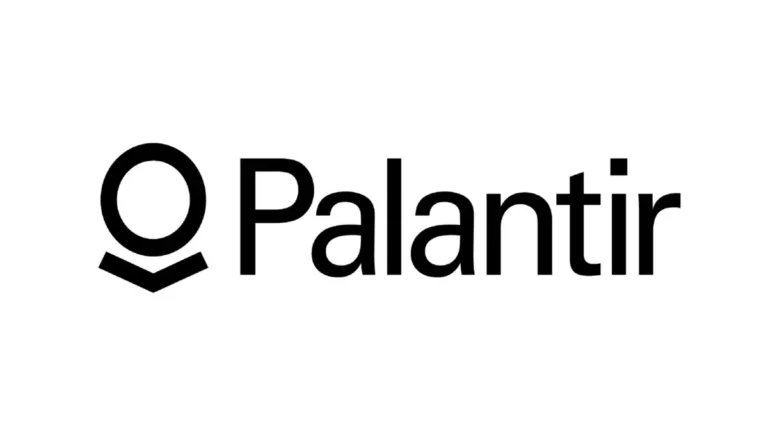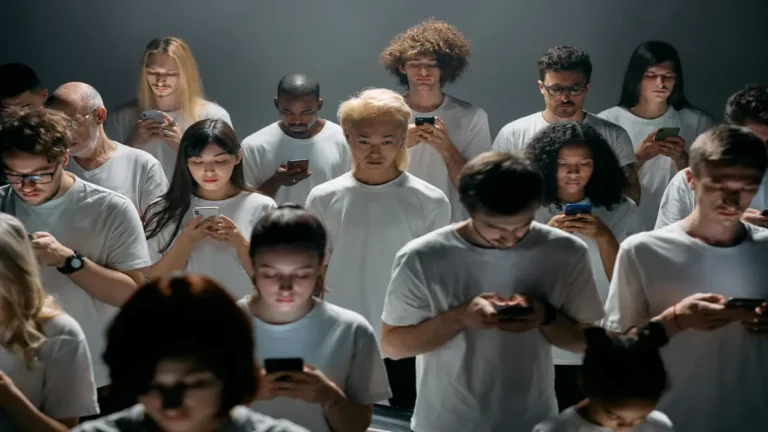Cloud Computing: What It Is, How It Works, and How to Use It
Understanding the Rise of Cloud Computing in 2025 In today’s hyper-digital world, Cloud Computing is no longer a buzzword—it’s the foundation of…
Understanding the Rise of Cloud Computing in 2025
In today’s hyper-digital world, Cloud Computing is no longer a buzzword—it’s the foundation of how modern businesses operate, innovate, and grow. Whether you’re using an app to track your fitness, running an e-commerce store, or managing a global team remotely, chances are you’re already benefiting from even if you don’t realize it. But what is cloud computing, really? And more importantly, how does cloud computing work behind the scenes to power everything from emails to enterprise-level applications?
Cloud computing refers to the delivery of computing services—like servers, storage, databases, networking, software, and analytics—over the internet. Instead of maintaining physical hardware or worrying about software updates, users simply access what they need, when they need it, from anywhere in the world. This flexibility has made it an essential tool not only for tech companies, but also for healthcare providers, online retailers, schools, logistics networks, and even small businesses.
Understanding how to use cloud computing strategically can give companies a major edge. It reduces costs, accelerates time-to-market, boosts security, and enables real-time collaboration on a global scale. As we continue into 2025 and beyond, the adoption of cloud computing is accelerating—fueled by other technologies like 5G, artificial intelligence, and edge computing.
This article will guide you through how cloud computing works, the different models available, and how it’s transforming the way we live and do business. If you’re looking to future-proof your skills or business strategy, understanding the mechanics and benefits of cloud computing is the perfect place to start.
Ready to level up your tech knowledge? Don’t miss our deep dive into Quantum Computing—a revolutionary force that’s reshaping the digital world alongside cloud computing.
And if you want weekly insights on the newest tech trends, make sure to subscribe to our free newsletter and stay one step ahead of the curve.

What Is Cloud Computing and Why It Matters
To truly appreciate the power of cloud computing, we need to start with the basics: what is cloud computing, and why is it such a game-changer for businesses and everyday users alike?
At its core, cloud computing is the delivery of digital services—servers, storage, databases, networking, software, and more—over the internet. Instead of hosting hardware and software locally, businesses and individuals can access these resources remotely via third-party providers. These cloud providers operate massive networks of global data centers that deliver computing resources on demand. According to Amazon Web Services, cloud computing enables on-demand access to scalable computing power without upfront investment.
So, what is cloud computing doing differently compared to traditional IT infrastructure? The answer is simple—efficiency, scalability, and accessibility. With cloud computing, you can launch a new product, scale a business globally, or access data from anywhere with an internet connection. There’s no need to invest in expensive servers or worry about maintenance. Everything is handled in the cloud.
One major reason cloud computing has become essential in 2025 is the increased demand for remote work, global collaboration, and real-time access to services. Cloud-based tools such as Google Drive, Dropbox, and Zoom have become critical for both personal and professional use. In business, platforms like AWS, Microsoft Azure, and Google Cloud enable everything from website hosting to artificial intelligence training. You can learn more about the security measures behind these platforms in the Microsoft Azure security overview.
The rise of cloud-based services has also enabled innovation in industries like retail, education, and logistics. For example, in the fast-growing world of e-commerce and Dropshipping in 2025, cloud platforms help merchants manage inventory, process payments, and automate customer service through cloud-hosted applications.
Another key benefit of cloud computing is cost efficiency. Companies only pay for what they use, which means there’s no waste on unused server space or dormant applications. This pay-as-you-go model makes advanced technologies accessible even to startups and small businesses.
In addition, how to use cloud computing strategically involves choosing the right type of cloud environment. Public clouds are open to multiple clients, private clouds are reserved for a single organization, and hybrid models combine the two. Each has its own advantages depending on business goals, security needs, and compliance requirements.
Emerging technologies like quantum computing are expected to revolutionize cloud capabilities in the coming years, while innovations such as 5G technology complement cloud computing by enabling faster data transfer and more reliable connections.
To wrap up, cloud computing is more than a tool—it’s an entire ecosystem that powers nearly every digital experience we have today. Understanding what is cloud computing provides the foundation for understanding the digital economy itself. As we explore more about how cloud computing works, you’ll see just how deeply this technology is shaping the future of innovation, productivity, and connectivity.
The Core Infrastructure Behind Cloud Computing
Understanding how cloud computing works means diving into the core infrastructure that powers it. Behind every cloud service lies a complex system of data centers, servers, and virtualization technology. While it might seem like “the cloud” is some abstract concept, in reality, it’s grounded in real, physical infrastructure spread across the globe.
At the foundation of cloud computing are data centers—massive facilities filled with high-performance servers, networking gear, and cooling systems. These centers are operated by cloud service providers like Amazon Web Services (AWS), Microsoft Azure, and Google Cloud. When users request services from the cloud, the data is routed through these centers, often from the one closest to their geographic location to ensure speed and reliability.
One of the key technologies that makes cloud computing possible is virtualization. This allows a single physical server to run multiple virtual machines (VMs), each acting like a separate computer. Thanks to this, providers can host services for thousands of customers on the same hardware while keeping their data and processes securely isolated. This efficient use of resources is what makes cloud services both scalable and cost-effective.
Another core component of how cloud computing works is automation. Tasks like scaling server capacity, balancing network loads, backing up data, and deploying software updates are handled automatically. This is one of the biggest advantages for businesses—they can focus on their goals without worrying about managing complex infrastructure manually.
Security and redundancy are also vital in cloud infrastructure. Providers invest heavily in cybersecurity, employing encryption, firewalls, and access controls. Additionally, they replicate data across multiple data centers to ensure continuity in case of hardware failure or natural disasters. This makes cloud computing significantly more reliable than traditional on-site IT systems.
Data storage in the cloud also follows tiered systems. Hot storage offers fast access for frequently used data, while cold storage provides a cheaper solution for archived data that’s rarely accessed. These options let businesses customize their cloud storage strategy based on cost and performance needs.
A strong infrastructure also enables cloud platforms to integrate with other advanced technologies. For instance, the synergy between cloud computing and 5G technology is enabling ultra-fast data transfers and real-time applications like autonomous vehicles and remote surgery. This convergence further solidifies the cloud’s role in the digital future.
As businesses and individuals increasingly depend on digital services, the cloud’s physical and virtual infrastructure ensures that demands are met with speed, security, and scalability. Knowing how this infrastructure operates is crucial for anyone looking to harness the full power of cloud computing in 2025 and beyond.
Up next, we’ll look at the different service models of cloud computing—and how to choose the right one based on your needs.

Cloud Computing Service Models – IaaS, PaaS, and SaaS Explained
Now that we’ve explored the infrastructure, it’s time to understand the cloud computing service models that define how users interact with and benefit from the cloud. These models—IaaS (Infrastructure as a Service), PaaS (Platform as a Service), and SaaS (Software as a Service)—represent different levels of control, customization, and convenience within the cloud computing ecosystem. Knowing how to use cloud computing effectively starts with understanding which of these models best suits your goals.
Infrastructure as a Service (IaaS)
IaaS is the most flexible and foundational cloud model. It provides virtualized computing resources over the internet—such as storage, networking, and servers. Users can scale resources as needed and install their own software, operating systems, and applications.
For example, startups often use IaaS platforms like Amazon EC2 or Microsoft Azure to launch websites and apps without having to purchase physical hardware. Businesses looking for control and scalability often start with IaaS because it offers complete freedom to configure environments. More details about the core cloud infrastructure can be found on Amazon Web Services and Microsoft Azure.
This model is ideal for developers, system administrators, and IT departments that want high levels of customization and scalability but don’t want the burden of maintaining physical infrastructure.
Platform as a Service (PaaS)
PaaS provides a more abstract layer—it delivers a ready-to-use development environment where users can build, test, and deploy applications quickly. Developers don’t have to worry about server management, storage configuration, or networking.
Google App Engine and Heroku are popular PaaS options that support rapid application development. If you’re developing a new SaaS product or mobile app, using a PaaS allows you to focus on the code while the cloud provider handles the infrastructure.
Cloud computing platforms that offer PaaS are especially valuable for teams working in agile environments or those developing modern applications with continuous integration and delivery (CI/CD) pipelines.
Software as a Service (SaaS)
SaaS is the most familiar model for the average user. It delivers software applications over the internet, fully managed by the provider. Users don’t install anything locally—they simply log in and use the application.
Examples of SaaS include Gmail, Microsoft 365, Slack, Zoom, and countless CRM systems. Businesses benefit from predictable costs, automatic updates, and the ability to scale usage across teams or departments instantly.
From an individual perspective, how to use cloud computing often starts here. Everyday users may not even realize they’re interacting with the cloud when they collaborate on Google Docs or store files on Dropbox, but that’s exactly what’s happening.
Choosing the Right Model
Each of these cloud computing models has its own use case. Startups might begin with IaaS to test and scale infrastructure. Software developers may prefer PaaS to streamline app development. Enterprises might adopt SaaS solutions for company-wide collaboration and efficiency.
By understanding these models, you’ll be better equipped to choose or combine them based on your specific technical and business needs.
Coming up, we’ll break down how cloud computing works in real-world business use cases—so you can see its impact across industries.
And if you’re interested in the future of digital innovation, don’t miss our article on How Quantum Computing Will Reshape Technology.

How Cloud Computing Works in Real-World Business Use Cases
Now that we’ve explored the technical infrastructure and service models, it’s time to see how cloud computing works in action. Across industries, cloud-based technologies are revolutionizing how businesses operate, scale, and deliver value. Whether it’s healthcare, finance, travel, or e-commerce, cloud computing enables faster innovation, improved collaboration, and more efficient use of resources.
Healthcare: Improving Patient Outcomes and Data Access
In healthcare, cloud computing supports real-time access to medical records, telemedicine, and large-scale health data analysis. Hospitals can now store electronic health records (EHRs) securely in the cloud, allowing doctors and specialists to access critical patient information from any location.
For instance, during the COVID-19 pandemic, many hospitals rapidly adopted cloud-based platforms to facilitate virtual consultations and remote diagnostics. This shift not only improved efficiency but also saved lives. HealthTech companies use cloud computing to power wearable health monitoring, AI-based diagnostics, and predictive analytics—all of which rely on scalable cloud infrastructure.
Finance: Real-Time Data and Enhanced Security
The finance industry has embraced cloud computing for everything from mobile banking apps to fraud detection. Cloud systems allow banks to process and analyze real-time data for more accurate decision-making. Risk modeling, credit scoring, and automated trading are now powered by cloud-based AI and machine learning tools.
Security, a top concern in finance, is robustly handled through cloud architecture that offers encryption, firewalls, and compliance with global data regulations. Financial institutions have found that how cloud computing works in terms of disaster recovery and data redundancy is more secure than traditional on-premise systems.
Travel and Hospitality: Personalized Experiences and Global Operations
Travel platforms like Airbnb, Booking.com, and Expedia rely entirely on cloud computing to manage listings, process reservations, and handle millions of user queries daily. By storing data in the cloud, these companies offer users real-time availability, personalized recommendations, and seamless booking experiences.
Hotels and airlines use cloud-based CRM systems to track customer preferences, automate loyalty programs, and manage dynamic pricing strategies. The scalability of cloud computing allows them to handle seasonal surges without infrastructure bottlenecks.
Want to explore the future of digital travel commerce? See how tech trends are reshaping it in our article on Dropshipping in 2025.
E-Commerce: Agility, Automation, and Global Reach
In e-commerce, understanding how to use cloud computing can be the difference between success and stagnation. Platforms like Shopify, WooCommerce, and BigCommerce are cloud-based, enabling merchants to build and manage online stores without technical knowledge.
With tools for inventory management, payment processing, and customer support hosted in the cloud, businesses can automate operations and focus on marketing and growth. Cloud platforms also power recommendation engines, helping brands deliver personalized shopping experiences that increase sales.
The Bottom Line
These real-world examples show how cloud computing works to create efficiencies, reduce costs, and unlock new capabilities. It’s not just for tech giants—small businesses and startups are using cloud tools to compete on a global scale.
Up next, we’ll look at the benefits and challenges of cloud computing, helping you understand where this powerful technology excels—and where caution is needed.
The Benefits and Challenges of Cloud Computing
As businesses and individuals increasingly adopt cloud computing, it’s important to weigh both the benefits and challenges to understand its full impact. Knowing how cloud computing works and where it shines can help you make informed decisions about integrating it into your workflow or business.
Key Benefits of Cloud Computing
1. Cost Efficiency: One of the biggest advantages of cloud computing is cost savings. Instead of investing heavily in physical servers and IT maintenance, users pay only for the resources they consume. This pay-as-you-go model helps startups and established businesses optimize budgets without sacrificing performance.
2. Scalability and Flexibility: Cloud resources can be scaled up or down quickly depending on demand. For example, during peak shopping seasons, e-commerce platforms can instantly add server capacity to handle increased traffic, avoiding downtime or slow loading speeds.
3. Accessibility and Collaboration: Because cloud services are accessed over the internet, teams can work from anywhere in the world. Cloud-based tools like Google Workspace and Microsoft 365 enable real-time collaboration, increasing productivity and speeding up decision-making.
4. Disaster Recovery and Data Backup: Cloud providers maintain multiple data centers with data replication, ensuring data safety even if one center fails. This redundancy makes cloud computing more reliable than many traditional on-premises systems.
5. Integration with Emerging Technologies: Cloud computing integrates seamlessly with technologies like AI, machine learning, and IoT, unlocking innovative solutions across industries. For instance, combining cloud power with 5G technology enables faster data transmission and low-latency applications.
Challenges and Considerations
Despite its many advantages, cloud computing comes with challenges that users must consider:
1. Data Security and Privacy: Storing sensitive information on the cloud raises concerns about breaches and unauthorized access. While cloud providers implement advanced security protocols, businesses must ensure compliance with regulations and employ additional security measures where necessary.
2. Dependence on Internet Connectivity: Since cloud services require internet access, outages or slow connections can disrupt operations. Organizations must plan for contingencies and evaluate network reliability.
3. Vendor Lock-in: Choosing a specific cloud provider’s ecosystem can make migrating to another provider difficult and costly. Businesses need to assess their long-term needs and consider multi-cloud or hybrid solutions to avoid this issue.
4. Compliance and Legal Issues: Different regions have varying data sovereignty laws. Companies operating internationally need to ensure their cloud usage complies with local regulations to avoid legal complications.
How to Use Cloud Computing Responsibly
Understanding these benefits and challenges is key to effectively leveraging cloud computing. Companies that invest in proper cloud strategy, security training, and network infrastructure can maximize gains while minimizing risks.
As cloud technologies evolve, staying informed about best practices will be essential. For instance, exploring innovations like quantum computing can provide insight into the future of cloud security and processing power. If you want to learn more, check out our article on Quantum Computing.
Next, we will explore the practical steps for businesses and individuals on how to use cloud computing to maximize value.
How to Use Cloud Computing to Transform Your Business and Life
After understanding the infrastructure, service models, and benefits of cloud computing, the next step is learning how to use cloud computing effectively. Whether you’re an individual, a startup, or a large enterprise, the cloud offers powerful tools to improve productivity, reduce costs, and accelerate innovation.
Getting Started with Cloud Computing
The first step in how to use cloud computing is choosing the right cloud provider. Popular options include Amazon Web Services (AWS), Microsoft Azure, Google Cloud Platform, and IBM Cloud. Each offers a variety of services tailored for different needs—from simple file storage to complex machine learning models.
Once you select a provider, begin by migrating existing applications or data to the cloud. Many providers offer tools to simplify this process, making the transition smoother for businesses. Start with non-critical applications to minimize risks during migration.
Using Cloud Computing for Storage and Backup
One of the most common uses of cloud computing is secure, scalable storage. Services like Amazon S3 or Google Drive let you store files accessible from anywhere with an internet connection. Cloud backup solutions protect data from accidental loss or disasters, ensuring business continuity.
Cloud Computing for Collaboration and Remote Work
The pandemic accelerated the shift to remote work, and cloud computing has been at the heart of this transformation. Tools like Microsoft 365 and Google Workspace enable teams to collaborate in real-time, sharing documents, spreadsheets, and presentations seamlessly.
By adopting cloud computing solutions, businesses reduce dependence on physical office spaces, lower IT overheads, and empower employees with flexible work options.
Leveraging Cloud Computing for Advanced Analytics and AI
Beyond storage and collaboration, cloud computing powers advanced analytics and artificial intelligence applications. Cloud platforms offer machine learning services that allow businesses to analyze large datasets, predict trends, and automate decision-making.
For example, retailers use cloud-based AI to personalize marketing campaigns, improving customer engagement and sales. Financial firms utilize cloud analytics to detect fraud and manage risk more effectively.
Cloud Computing for Startups and Entrepreneurs
Startups especially benefit from cloud computing by avoiding upfront hardware costs and gaining access to enterprise-grade infrastructure. This democratization of technology enables innovation at a scale previously only available to large corporations.
Entrepreneurs can launch websites, develop apps, and scale their businesses with minimal investment, focusing on growth rather than IT management.
Future-Proofing Your Business with Cloud Computing
To stay competitive, it’s crucial to embrace ongoing cloud innovations. Combining cloud computing with emerging technologies like 5G or IoT can open new opportunities for automation and enhanced customer experiences.
Start today by exploring cloud service trials or consulting with cloud experts to tailor solutions to your needs.
Ready to unlock the full potential of cloud computing? Dive deeper into related technologies by visiting our articles on Quantum Computing and Dropshipping in 2025.
Also, don’t forget to subscribe to our newsletter for the latest updates on tech, innovation, and business trends delivered straight to your inbox!

Embracing the Future with Cloud Computing
Cloud computing has transformed from a niche technology into an essential part of modern business and everyday life. Understanding what is cloud computing, how cloud computing works, and how to use cloud computing effectively is no longer optional—it is crucial for anyone looking to stay competitive in today’s fast-paced digital world.
From startups to global enterprises, the cloud offers unmatched flexibility, scalability, and cost-efficiency. It empowers industries like healthcare, finance, travel, and e-commerce to innovate rapidly and respond to evolving customer needs. Whether it’s enabling remote collaboration, powering advanced analytics, or providing reliable backup and disaster recovery, the benefits of cloud computing are vast and continually growing.
However, as with any powerful technology, it’s important to be aware of challenges such as data security, vendor lock-in, and regulatory compliance. Being informed and proactive helps organizations harness the full potential of cloud services while mitigating risks.
The future looks even more exciting with emerging technologies like quantum computing and 5G set to enhance cloud capabilities further. For those interested in staying ahead of the curve, exploring these innovations can provide a competitive edge.
If you want to deepen your understanding of cutting-edge technology, be sure to check out our articles on Quantum Computing and 5G Technology. These topics are tightly linked to the evolution of cloud computing and will keep you informed about the next wave of digital transformation.
Don’t miss out on future tech insights! Subscribe to our newsletter today and get the latest trends, tips, and news delivered straight to your inbox. Staying updated with reliable information is the best way to leverage innovation and transform your business or career.





